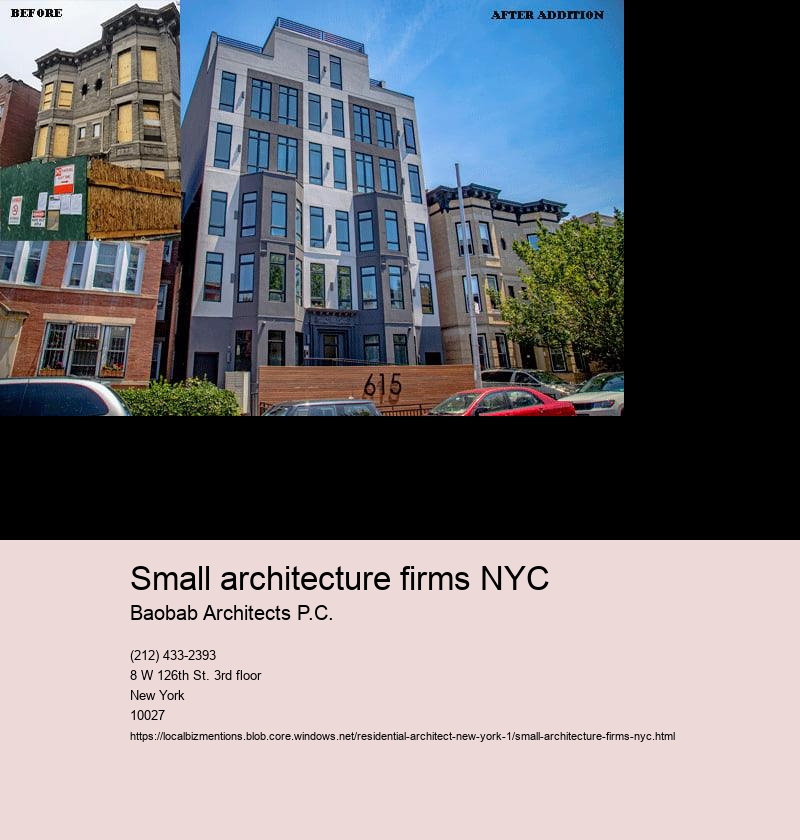Small architecture firms NYC
Revealing the Architectural Design Process: From Concept to Building and construction
Small architecture firms NYC .
Intro: Starting a trip from the perception of a building idea to its physical indication is akin to navigating a maze of creativity, performance, and triviality. The architectural design procedure is a diverse venture that effortlessly blends virtuosity with engineering, vision with functionality. In this thorough exploration, we explore the elaborate steps associated with transforming a plain concept into a substantial structure, weaving together the strings of innovation, collaboration, and careful planning.
-
The Genesis of Ideas: The architectural design process begins with a spark of motivation, a visionary idea that sets the phase for the production of something remarkable. Architects attract from a myriad of impacts –-- cultural, historical, ecological, and client-specific factors –-- to create a style quick that envelops the significance of the job. This preliminary phase is characterized by conceptualizing sessions, laying out, and research study, where concepts are refined, challenged, and sculpted right into systematic visions.
-
Conceptualization and Schematic Style: With the layout short as their compass, architects start the journey of concept, converting abstract ideas into tangible kinds. Through sketches, 3D designs, and architectural renderings, the spatial relationships, massing, and overall looks of the task start to take shape. This phase is noted by experimentation, as architects explore different layout versions, looking for the perfect equilibrium in between capability, aesthetic appeals, and sustainability.
-
Design Development: As the idea solidifies, the emphasis moves towards improving the information and resolving technical challenges. Engineers collaborate closely with engineers, experts, and stakeholders to integrate structural systems, MEP (mechanical, electric, pipes) considerations, and sustainable design principles into the evolving layout. This repetitive process entails constant examination and adjustment, guaranteeing that the project remains lined up with the client'' s vision, budget restraints, and regulative requirements.
-
Building Documents: With the style settled, architects proceed to create extensive construction documents that serve as the blueprint for builders and specialists. These records include comprehensive illustrations, requirements, and technical notes, offering specific instructions for every facet of the construction procedure. Attention to information is critical throughout this stage, as also the smallest oversight can have significant implications on the top quality and integrity of the final built atmosphere.
-
Bidding and Negotiation: Once the construction documents are finished, the job gets in the bidding process and settlement phase, where contractors submit proposals and complete for the possibility to bring the style to life. Designers play an essential role in reviewing proposals, bargaining agreements, and choosing one of the most qualified group to carry out the job. Clear interaction and transparency are vital to cultivating successful partnerships and making certain that the job stays on track.
-
Building and construction Management: As construction commences, designers assume the role of project overseers, monitoring development, dealing with unforeseen challenges, and guaranteeing adherence to the design intent and high quality criteria. Site sees, progress conferences, and routine communication with the construction group promote collaboration and analytical, enabling the project to progress organically while staying real to its original vision.
-
Post-Occupancy Assessment: Even after the conclusion of building, the architectural design procedure continues with post-occupancy analysis, where the efficiency and performance of the built environment are assessed. Comments from residents, monitoring of energy usage, and evaluation of individual experience educate future layout decisions and contribute to ongoing enhancements in building practice.
Final thought: The journey from principle to building and construction in the building world is a testament to the power of imagination, cooperation, and precise planning. It is a procedure that goes beyond mere capability, transforming areas into experiences, and ideas right into concrete facts. By welcoming development, sustainability, and human-centric style concepts, architects have the opportunity to shape the built environment in extensive and significant methods, leaving an enduring tradition for generations to come.
